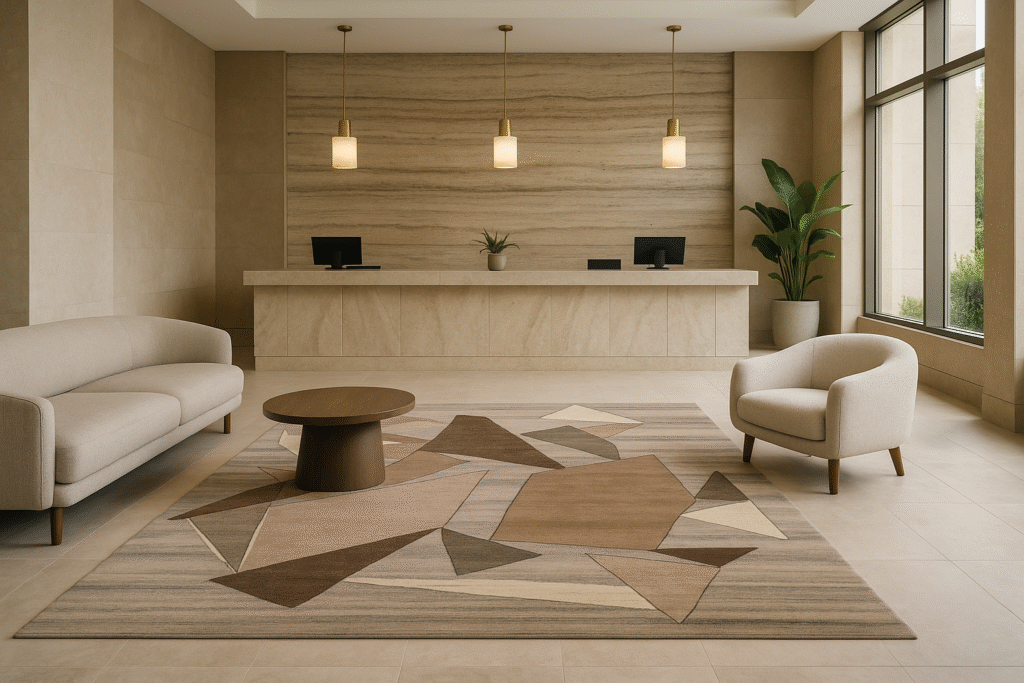Walk into any five-star hotel and you’ll notice something immediately – that feeling of luxury hits you the second your feet touch the floor. I’ve been working with hotels and resorts for over fifteen years now and I can tell you that the secret often lies beneath your feet. Those gorgeous rugs aren’t just a part of pretty decorations; they’re doing some serious heavy lifting when it comes to creating that “wow” moment guests remember long after checkout.
Here’s the thing about hospitality design – every single detail matters. But rugs? They’re special. They’re probably working harder than any other design element in the space, combining serious durability with the kind of beauty that makes people stop and stare. Let me walk you through what I’ve learned about choosing rugs that can handle the chaos of hotel life while still looking absolutely stunning.
Why Hotel Rugs Actually Matter More Than You Think
You know that split second when someone walks into your lobby and decides whether your hotel feels expensive or budget? That happens faster than you’d imagine and floor design plays a huge role in that judgment call.
I remember working with a boutique hotel in Manhattan where the owner was convinced expensive artwork would be the game-changer. Don’t get me wrong – art matters – but when we swapped out their basic carpet for a stunning Persian-inspired statement rug, the transformation was instant. Suddenly, guests were taking photos in the lobby, posting on Instagram and the front desk started getting compliments about the “beautiful décor.”
Here’s what good hotel rugs actually do:
- Set the mood before guests even check in
- Muffle the sound of rolling suitcases at midnight without discomfort to other guests
- Guide people naturally through your space without awkward signage
- Reinforce your brand personality – whether that’s classic elegance or modern edge
- Make spaces feel more expensive than they actually were to furnish
The best part? Unlike renovating bathrooms or updating furniture, changing rugs can completely transform a space without breaking the bank or shutting down for months.
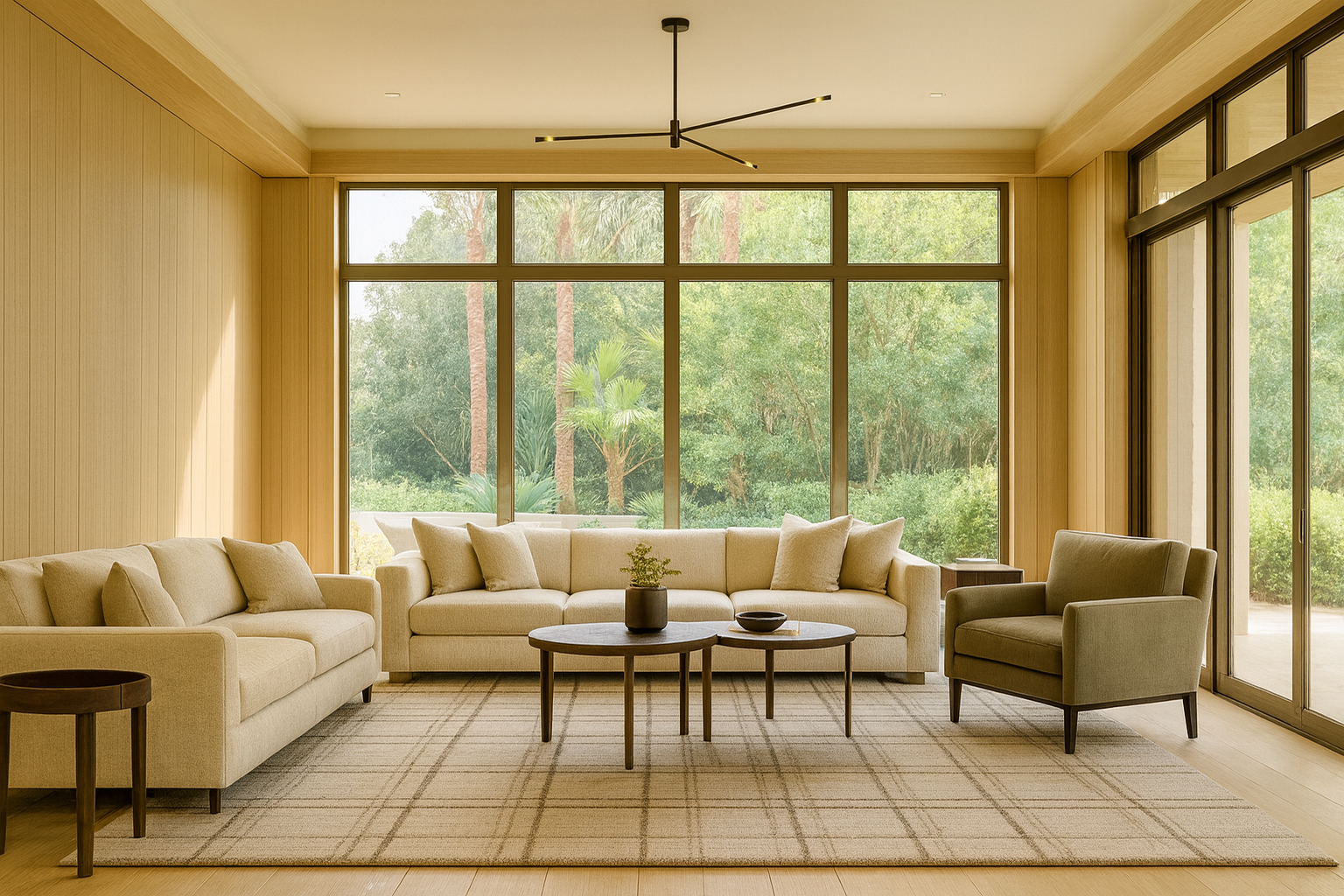
What Hotels are actually Choosing in 2025
Rather than focusing on what design magazines suggest, here’s what is actually working in real properties today.
The Grand Statement Approach
Big luxury hotel carpeting is having a major moment, especially in lobbies. We’re talking rich jewel tones – deep emeralds, sapphire blues, burgundies – paired with neutral backgrounds. The effect is immediately impressive without being overwhelming. I just finished a project in Dubai where the lobby rug became the hotel’s most photographed feature.
Back to Basics
Traditional Persian and Oriental patterns are everywhere again, but with a twist. Modern colorways, oversized scales and contemporary interpretations of classic motifs. There’s something comforting about these patterns that guests connect with, especially in our increasingly digital world.
Bringing Nature Inside
Floral rugs are having their moment, particularly in resort settings. But we are not talking about your grandmother’s rose garden here – think watercolor botanicals, oversized blooms, subtle nature-inspired abstracts. Perfect for those Instagram shots guests love taking.
Clean and Simple
Minimalist geometric patterns work incredibly well in modern hotels. Clean lines, muted colors, subtle textures that don’t compete with your furniture or art. They are sophisticated without trying too hard.
Coastal Vibes
Beach resorts can’t get enough of ocean-inspired designs right now. Soft aquas, sandy beiges, patterns that echo waves or shorelines. These rugs instantly transport guests into a vacation mode.
Rugs as Art
This trend surprised me, but it’s everywhere now. Hotels are choosing rugs with bold, artistic designs – abstract patterns, painterly effects, pieces that could hang on a wall. Guests love the Instagram factor and it’s often more affordable than purchasing original artwork.
Vintage with Purpose
Distressed finishes and vintage-style Persian designs are popular in boutique properties. There’s something authentic and story-rich about these pieces that resonates with travelers seeking unique experiences.
Going Green
Sustainable rugs made from organic wool, bamboo silk and recycled materials are becoming standard, not just trendy. Guests appreciate the environmental consideration and the quality of sustainable options has improved significantly
Custom Everything
More hotels are investing in bespoke rugs with custom colors, patterns, even subtle logo integration. It’s branding that doesn’t feel like branding – sophisticated and memorable.
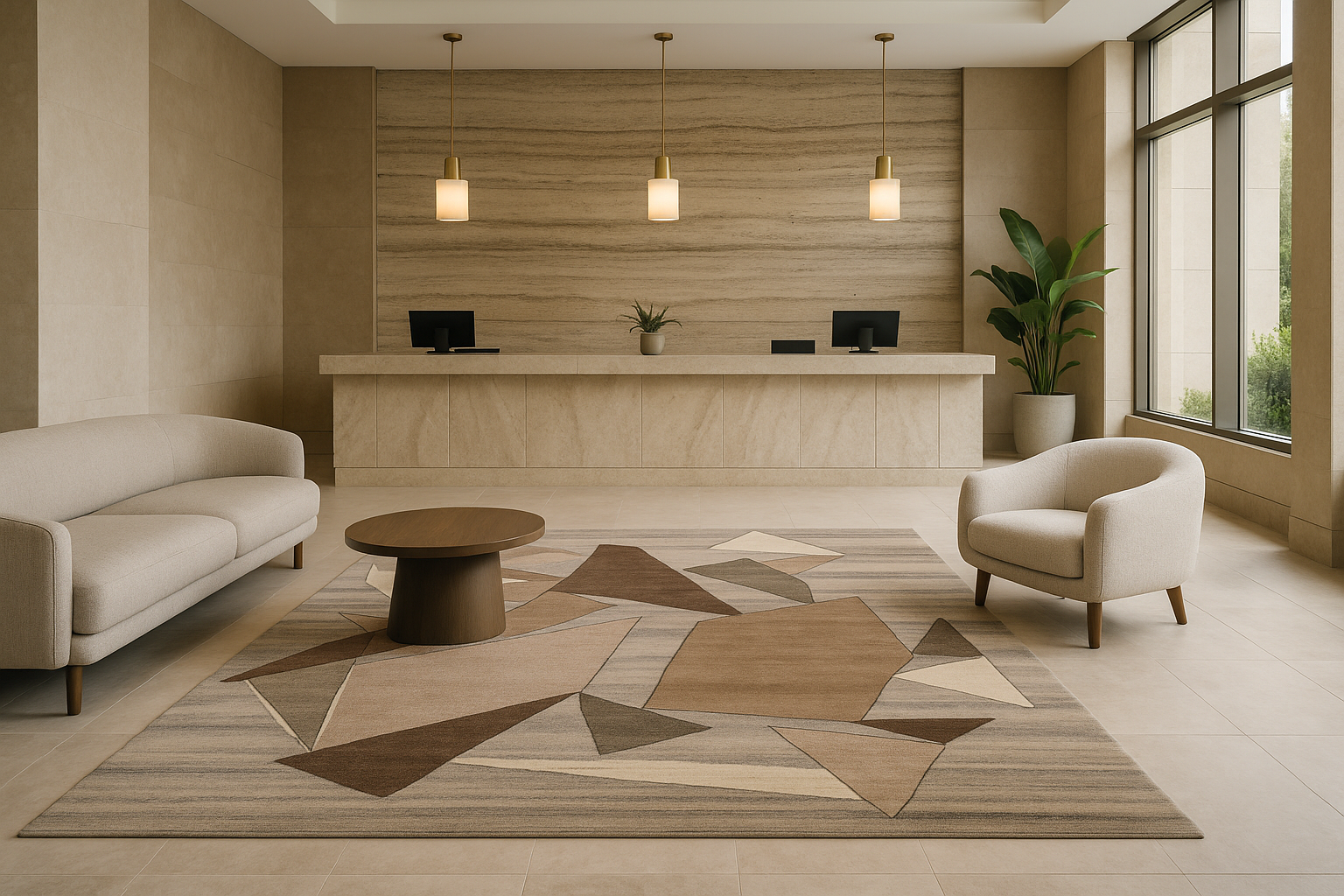
The Reality Check: What Hotel Rugs Actually Need to Survive
Here’s where things get real. Hotel rugs aren’t like home rugs. They need to survive things that would destroy regular carpets within months.
Built for Battle, I’ve seen hotel lobbies where thousands of people walk through daily – rolling suitcases, high heels, spilled coffee, you name it. The rugs that last are engineered differently – reinforced edges, incredibly dense construction, fibers that bounce back after being crushed by luggage.
Good commercial-grade rugs often last 15-25 years with proper care. That’s not just durability – that’s smart business. I tell my clients to think of quality rugs as a sound investment rather than an ongoing expense.
Stain Reality Red wine, coffee, food, makeup – hotel rugs see it all. Solution-dyed fibers improve colorfastness and generally make professional cleaning more effective; combined with prompt spill response, they help rugs retain a fresh appearance. I’ve seen rugs that look brand new after five years of hotel use because they were specified correctly from the start.
Matching Rugs to Hotel Spaces (what actually works)
Lobby Drama Grand hotel lobby rugs need to make a statement while handling serious foot traffic. Oversized Persian-inspired pieces in rich colors work beautifully, but so do contemporary abstracts in sophisticated color palettes. The key is scale – too small looks cheap, too busy becomes overwhelming.
Guest Floor Sophistication Executive floors and suites need a different approach. Subtle luxury works best here – geometric patterns in muted tones, sophisticated textures that feel rich underfoot. The goal is to create a restful environment that feels expensive without being flashy.
Restaurant Practicality Dining spaces need rugs that hide daily wear while looking good. Darker colors with intricate patterns disguise spills, while quality fibers absorb sound for better acoustics. For dining areas, I prioritize darker, patterned constructions, appropriate fiber choices and surface treatments that make spills easier to manage and help conceal day-to-day wear.
Event Space Flexibility Conference rooms and ballrooms benefit from modular approaches – rugs that can be reconfigured for different setups. Neutral designs with subtle interest work best because they don’t compete with event décor or distract from presentations.
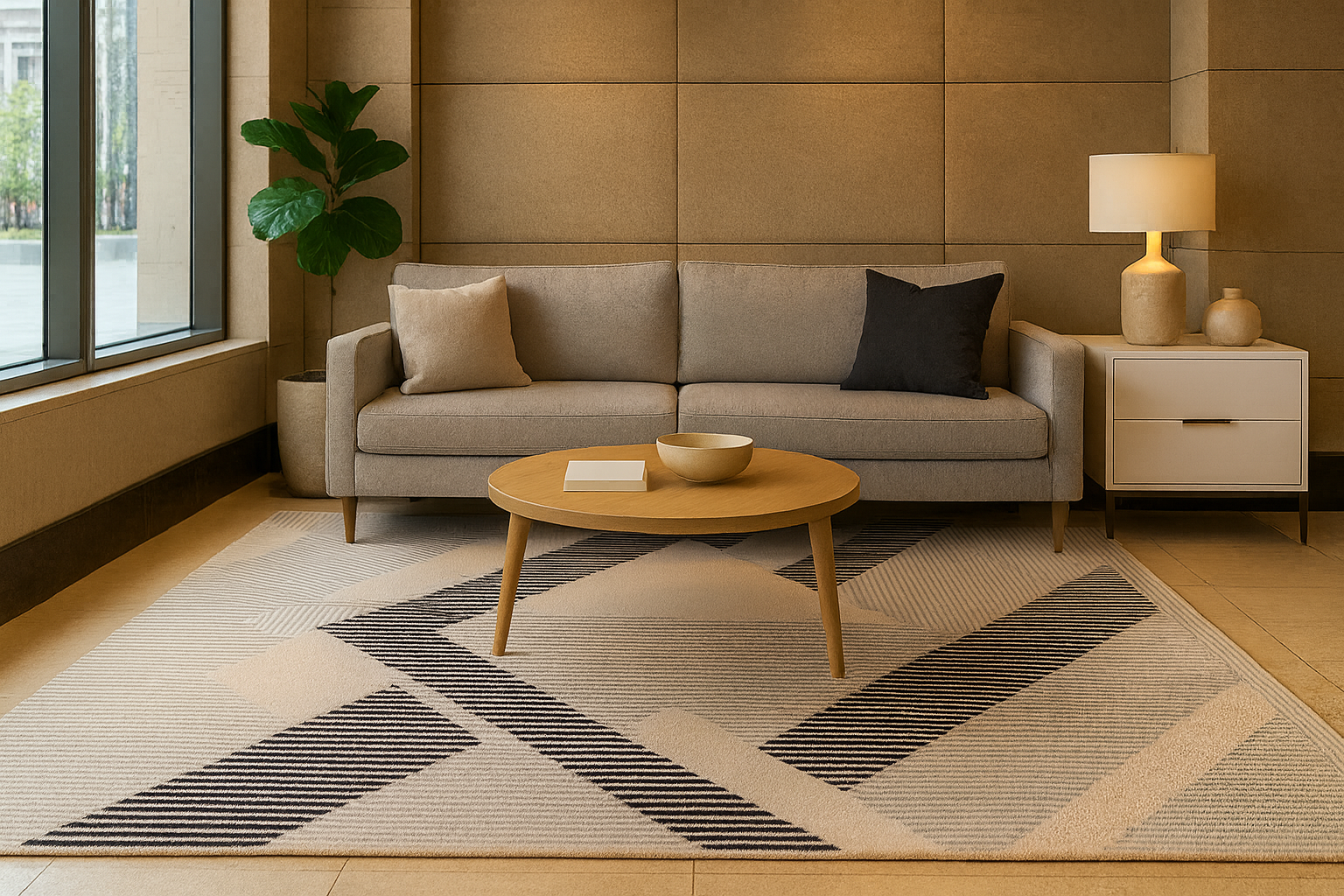
Material Choices: What’s Worth the Money
Wool: The Gold Standard
I’m biased toward wool rugs for luxury hotels. Yes, they cost more upfront, but Wool is prized for durability, natural performance characteristics and its ability to age gracefully. A quality wool rug develops character over time rather than just looking worn. That makes it a smart investment for properties that want lasting elegance and rugs that retain their appeal for years to come.
Synthetic Solutions
For budget-conscious properties, modern synthetic rug has come a long way. Polypropylene and nylon options offer excellent durability and improved cleanability at lower price points. They work particularly well in high-traffic corridors and back-of-house areas.
Blended Approaches
Wool synthetic blends often hit the sweet spot – wool’s luxury feel with synthetic durability. These work well in most hotel applications and offer a balanced solution when both style and practicality matter.
Pulling It All Together: Design Cohesion
Creating a cohesive look across different hotel spaces requires strategy, not just pretty rugs.
Color Flow: I use rugs to connect color palettes throughout properties. Rich tones in lobbies, softer versions in corridors, complementary accents in dining areas. The result feels intentional and expensive.
Pattern Play: Large-scale patterns anchor lobbies, medium patterns work in restaurants and smaller motifs suit corridors and guest rooms. Mixing scales adds visual interest without chaos.
Texture Variety: Contrasting textures keep things interesting – plush piles in guest areas, flat weaves in dining spaces, textured options in transitional areas. Guests notice these subtle variations even if they can’t articulate why spaces feel rich and layered.
Maintenance Reality: Making a Rug Last
Even the best rugs fail without proper care. Here’s what actually works in busy hotel environments:
Daily Discipline
Proper vacuuming technique matters more than expensive equipment. Training housekeeping staff on correct methods prevents premature wear. Immediate spill response is non-negotiable.
Professional Partnership
Regular professional cleaning – typically 2-4 times yearly – extends rug life dramatically. But the company you choose matters. Hotel-experienced cleaners understand commercial fibers and appropriate treatments.
Strategic Rotation
Moving rugs seasonally prevents uneven wear patterns. High-traffic areas benefit from periodic rug rotation, extending overall lifespan.
Quick Response Protocol
Having the right spot-cleaning supplies and trained staff prevents minor spills from becoming permanent stains. Different fiber types need different treatments – one-size-fits-all approaches often make problems worse.
Investment Thinking: Why Quality Pays Off
Long-Term Math
Quality rugs cost more initially but often prove more economical over time. Example (annualized cost): a $10,000 rug that lasts 20 years has an annualized cost of $500; a $3,000 rug replaced every five years has an annualized cost of $600 and may also cause repeated installation disruption.
Brand Building
Guests associate interior quality with overall hotel value. Impressive rugs boost reviews, encourage social media sharing and justify premium pricing. That lobby rug might generate more positive feedback than any other single design element.
Flexibility Value
Seasonal rug rotation refreshes interiors without major renovation costs. Some hotels change rugs annually to maintain visual interest and accommodate wear patterns.
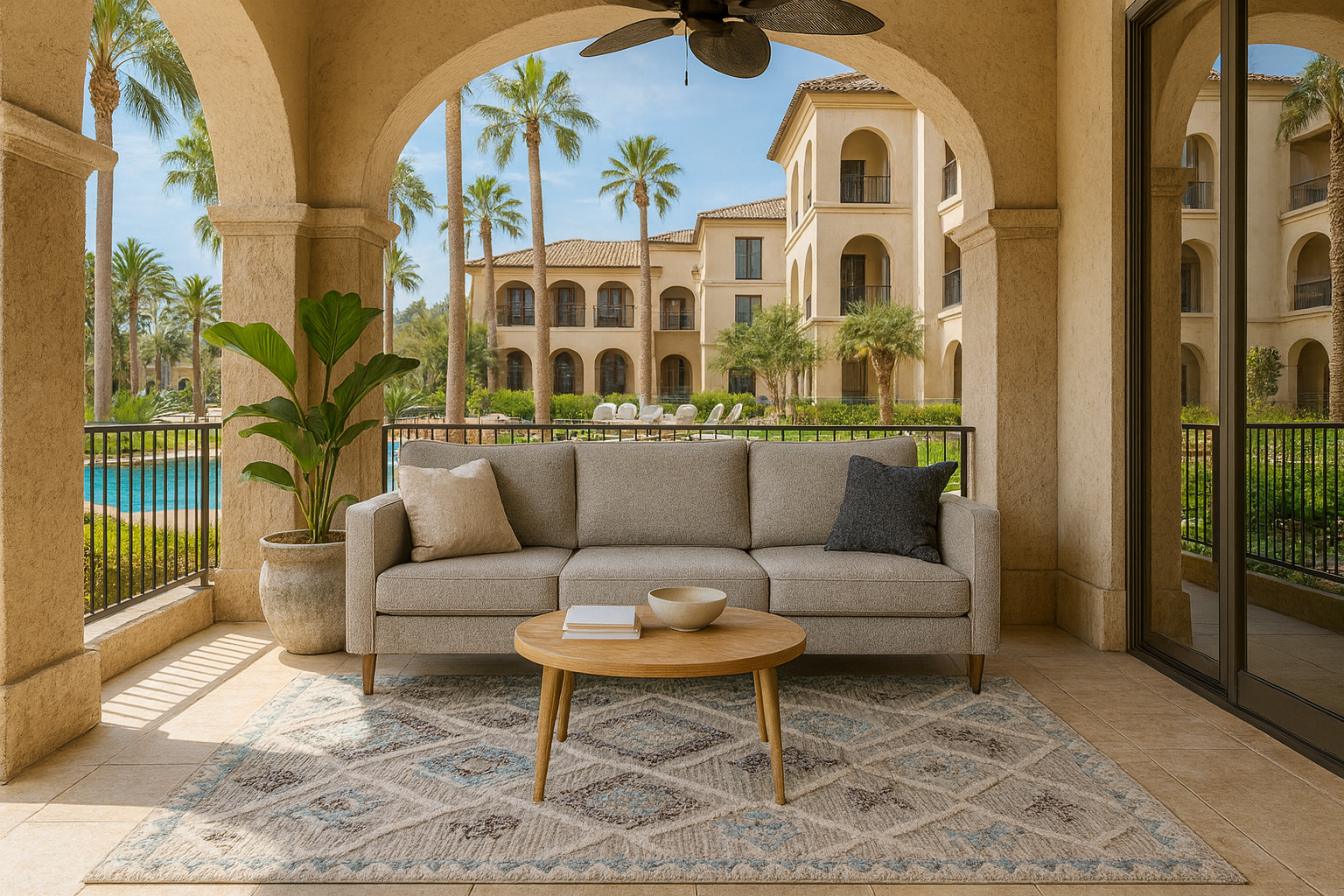
What’s Coming Next in Hotel Rug Design
Sustainability Integration
Eco-friendly rugs aren’t just trendy anymore – they’re expected. Recycled fibers, organic materials and responsible manufacturing processes appeal to environmentally conscious travelers and support green certification programs.
Smart Technology
Embedded sensors in rugs can monitor traffic patterns, helping optimize cleaning schedules and space utilization. Still emerging, but fascinating possibilities for data-driven hospitality management.
Local Art Partnerships
Collaborating with regional artists creates unique, culturally authentic rug designs. Guests appreciate the local connection and hotels get distinctive branding that can’t be replicated elsewhere.
Making It Happen: Your Next Steps
Choosing the right hospitality rugs isn’t just about picking pretty patterns – it’s about creating experiences guests remember. Whether you’re planning a complete renovation or updating tired interiors, rugs offer immediate impact with a lasting impression.
The best hotel rugs combine aesthetic beauty with commercial durability, creating spaces that photograph beautifully while surviving daily hospitality demands. When specified thoughtfully and maintained properly, luxury rugs become signature features that define your property’s character.
If you’re ready to transform your hotel spaces with rugs that balance elegance with endurance, consider exploring curated collections at Hasida Rugs Collection. Their handmade pieces are crafted specifically for hospitality environments, offering the artistry and durability today’s hotels demand.
Questions Hotel Owners Actually Ask
Q: Why should we invest in expensive rugs when cheaper options exist?
A. Good question – I get this constantly. Here’s the reality: cheap rugs look cheap, wear quickly and need frequent replacement. Quality rugs create positive impressions, last decades and often cost less per year than budget alternatives. Plus, they support higher room rates through improved perceived value.
Q: What rug types work best in high-traffic areas like lobbies?
A. Commercial-grade rugs with dense construction, preferably wool or high-quality synthetic blends. Look for reinforced edges, solution-dyed fibers and appropriate pile height. Avoid delicate materials or loose weaves – they won’t survive hotel environments or busy traffic.
Q: Are handmade rugs practical for hotels?
A. Absolutely, especially for luxury properties. Handmade rugs offer unique artistry and superior craftsmanship that guests notice. Many of my favorite hotel installations feature handmade pieces that become signature design elements. Just ensure they meet commercial durability standards.
Q: How do we maintain rugs in busy hotel environments?
A. Daily vacuuming, immediate spill response and professional cleaning 2-4 times yearly. Train staff properly – poor maintenance ruins even expensive rugs quickly. Consider professional maintenance contracts for consistency.
Q: Can rugs really impact guest satisfaction scores?
A. Yes – more than most people realize. Guests notice quality details and rugs significantly influence first impressions. I’ve seen hotels improve review scores after installing impressive lobby rugs. Social media posts featuring beautiful interiors drive bookings too.
Q: How do rugs help with noise control in hotels?
A. Quality rugs dramatically reduce impact noise – footsteps, rolling luggage, dropped items. This improves guest experience, especially in rooms above public areas. Sound absorption also enhances restaurant acoustics and meeting room functionality.

